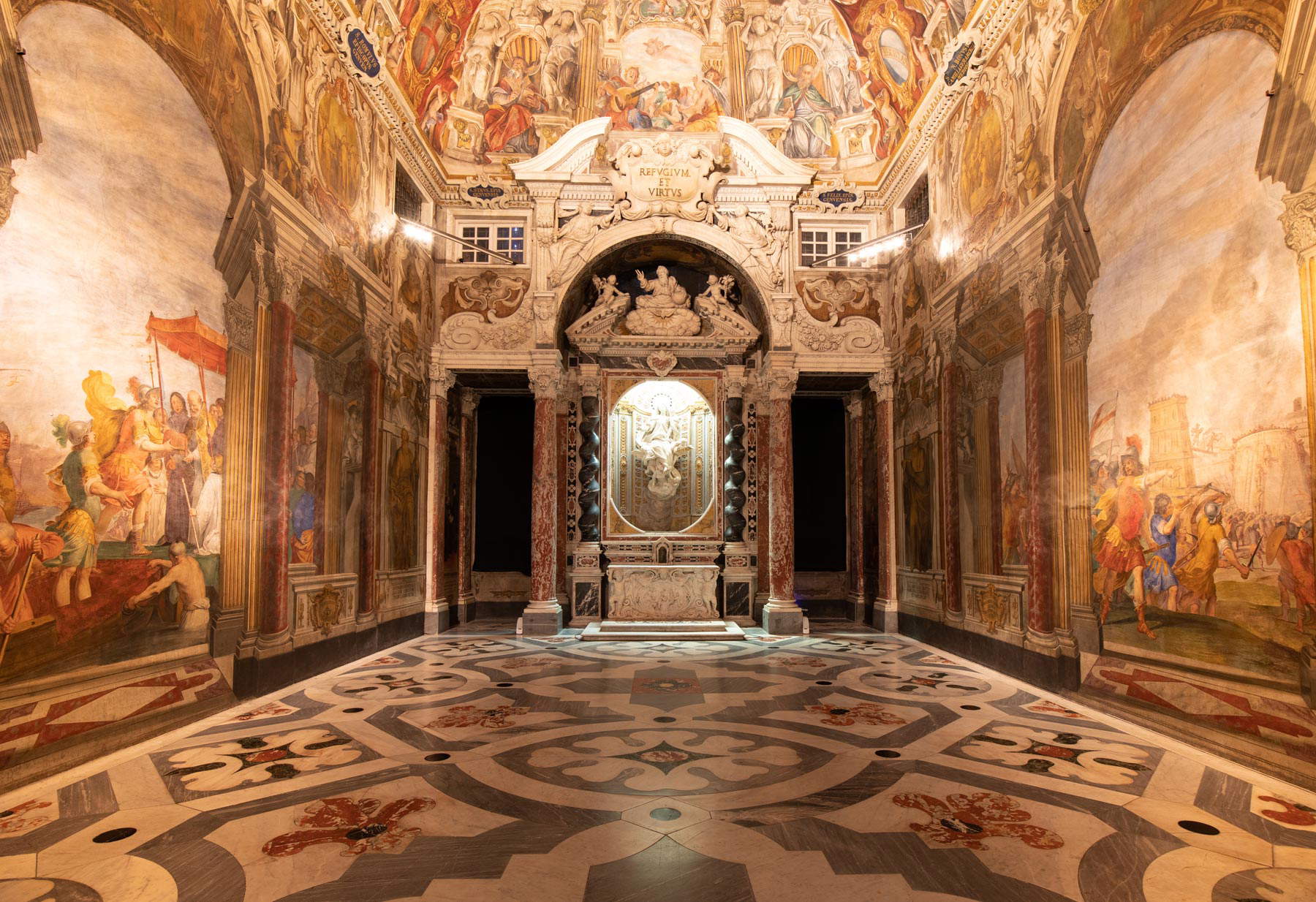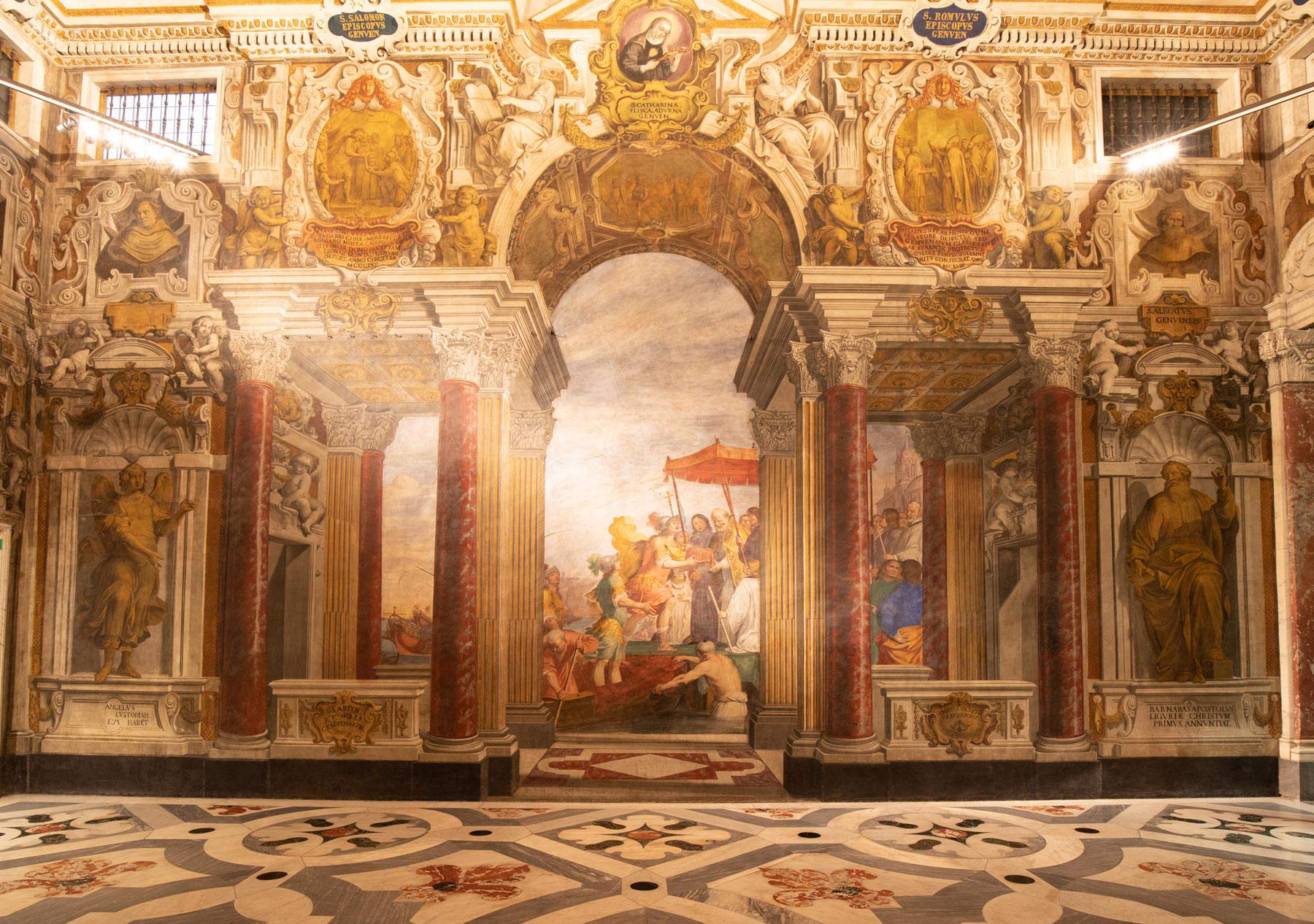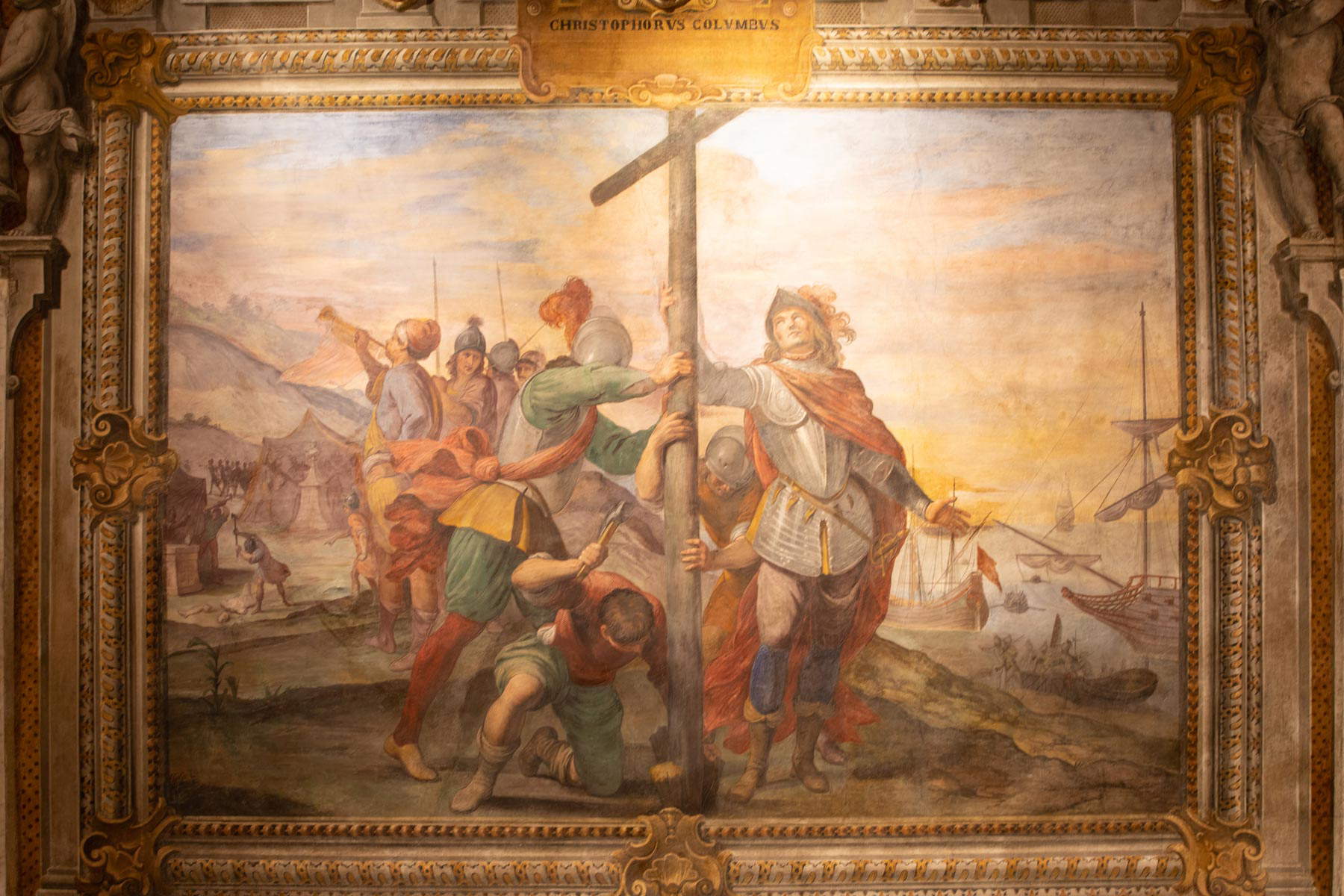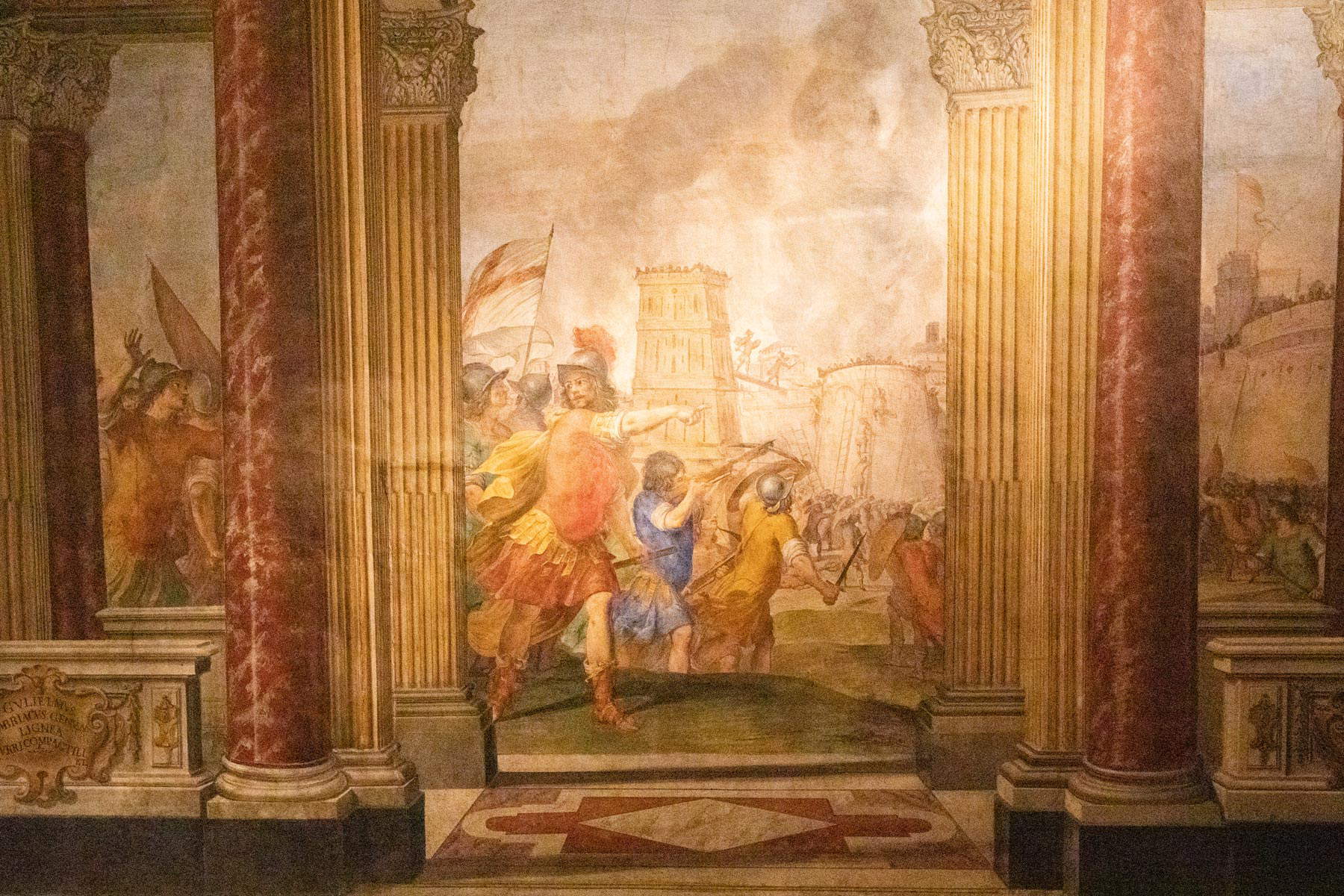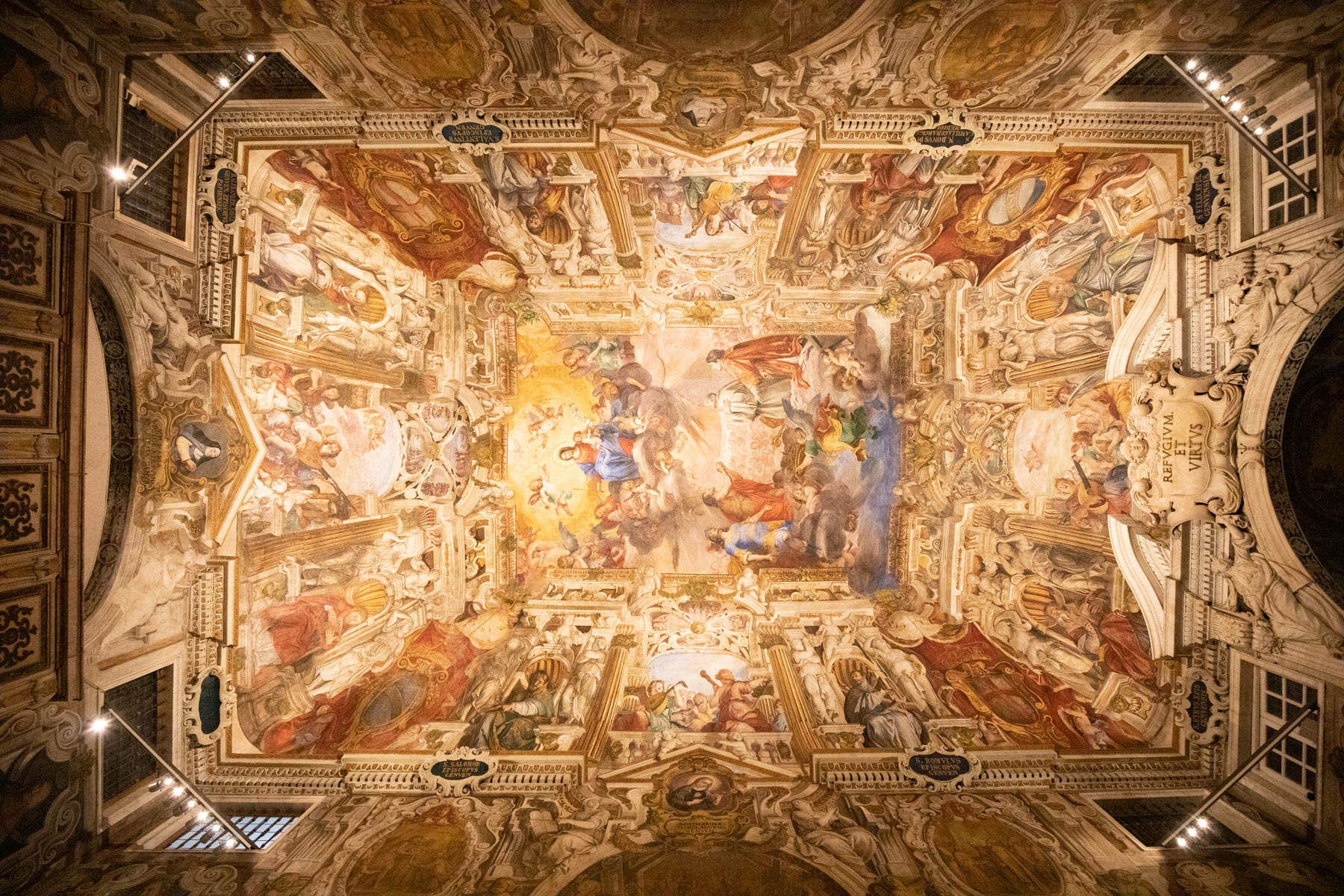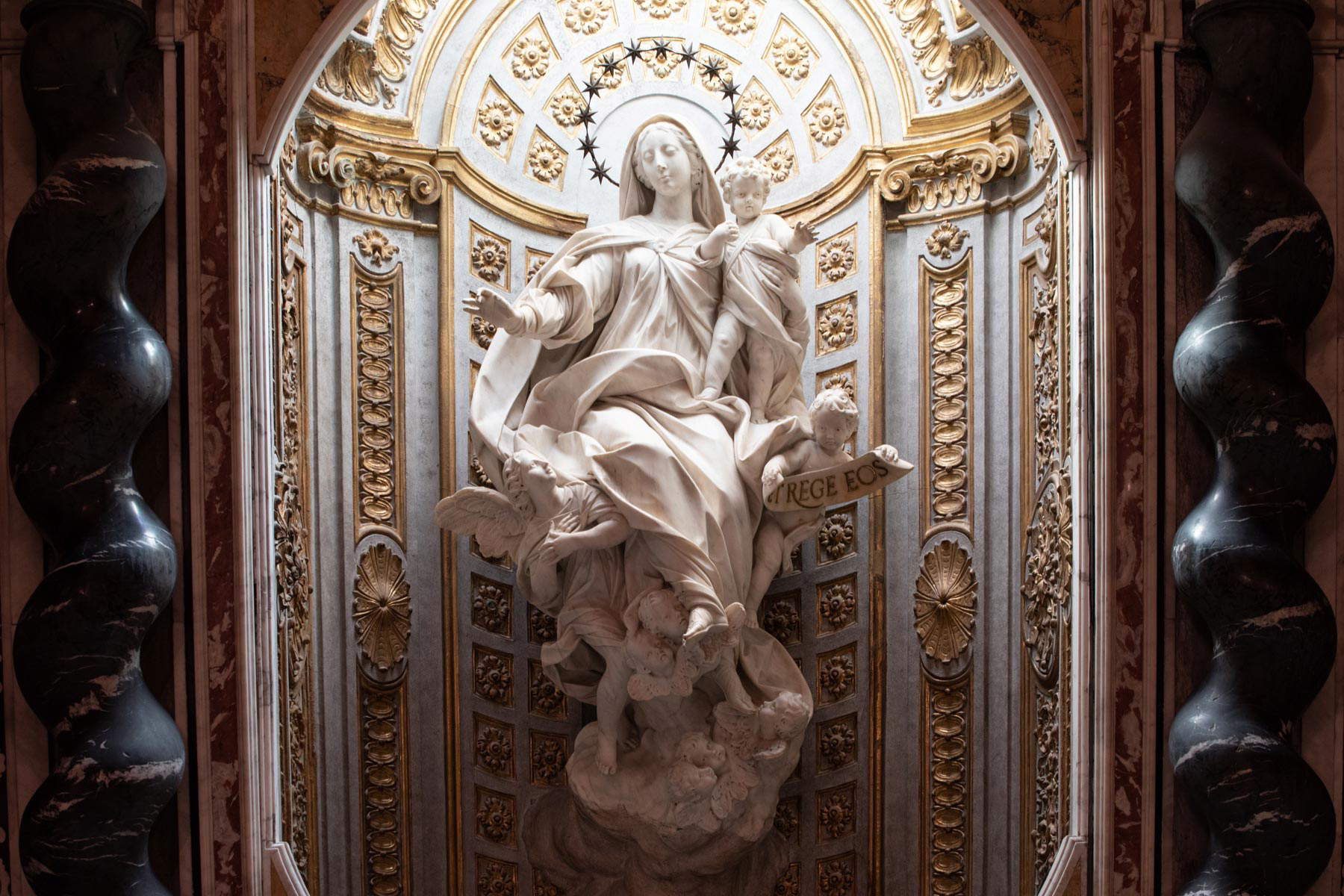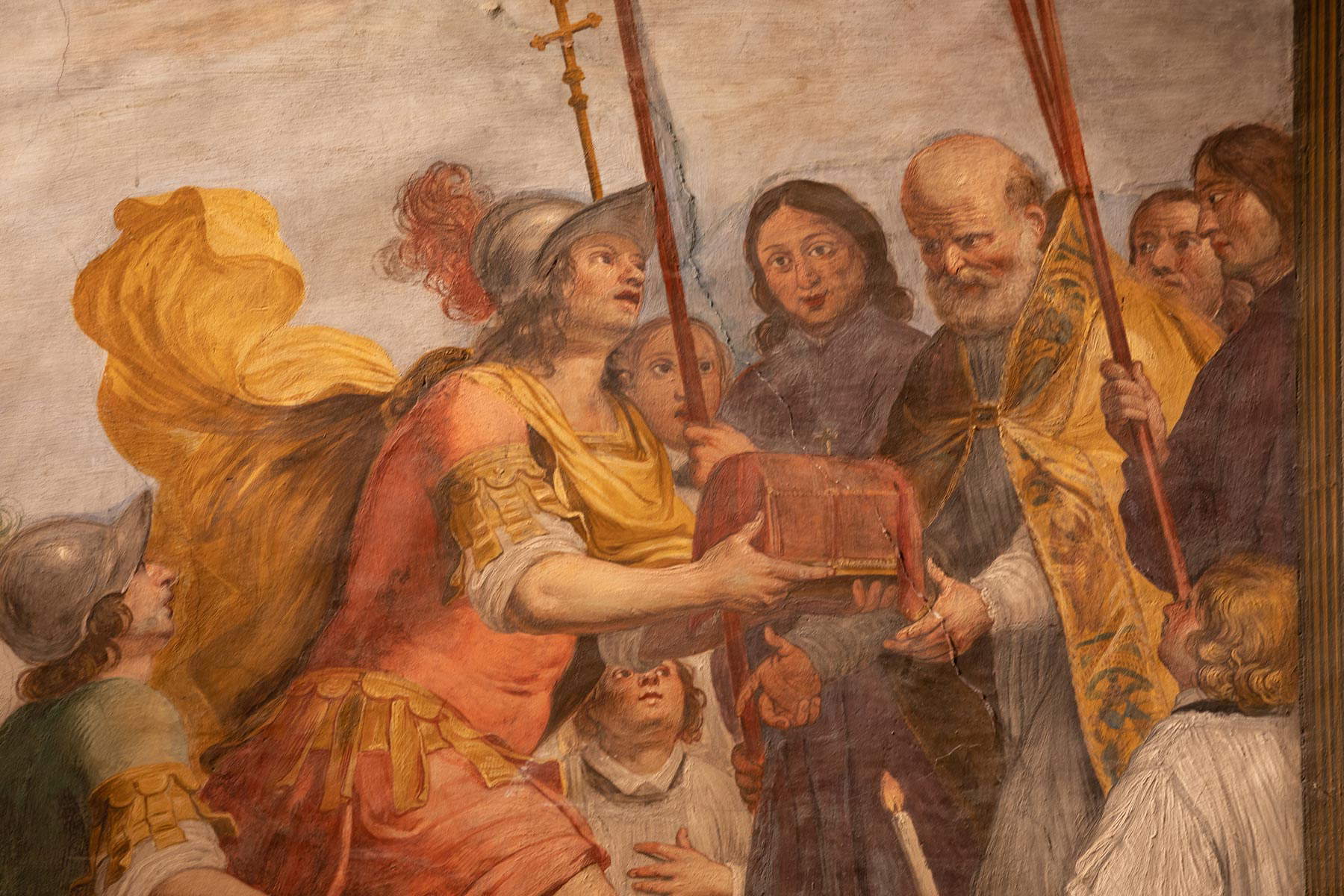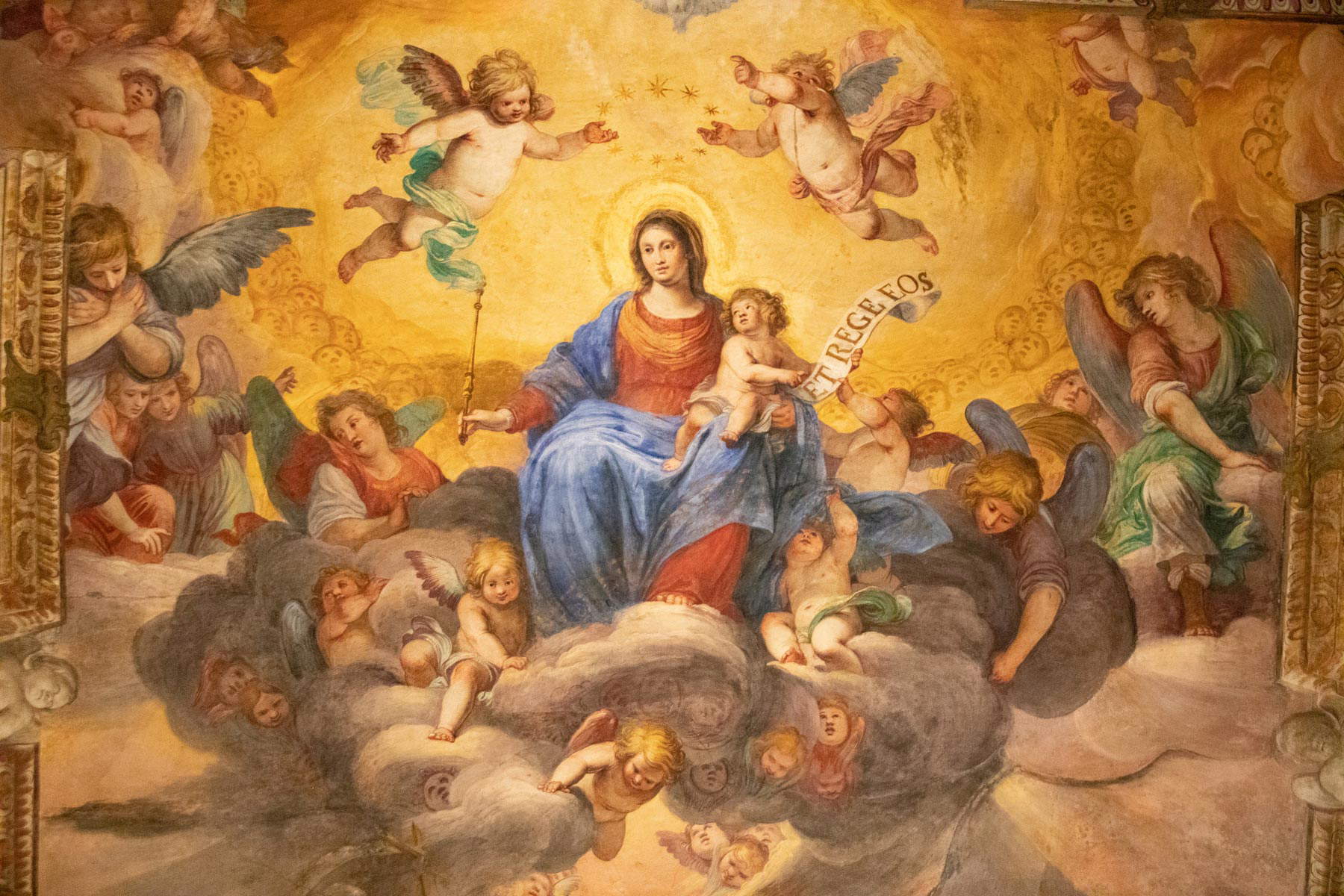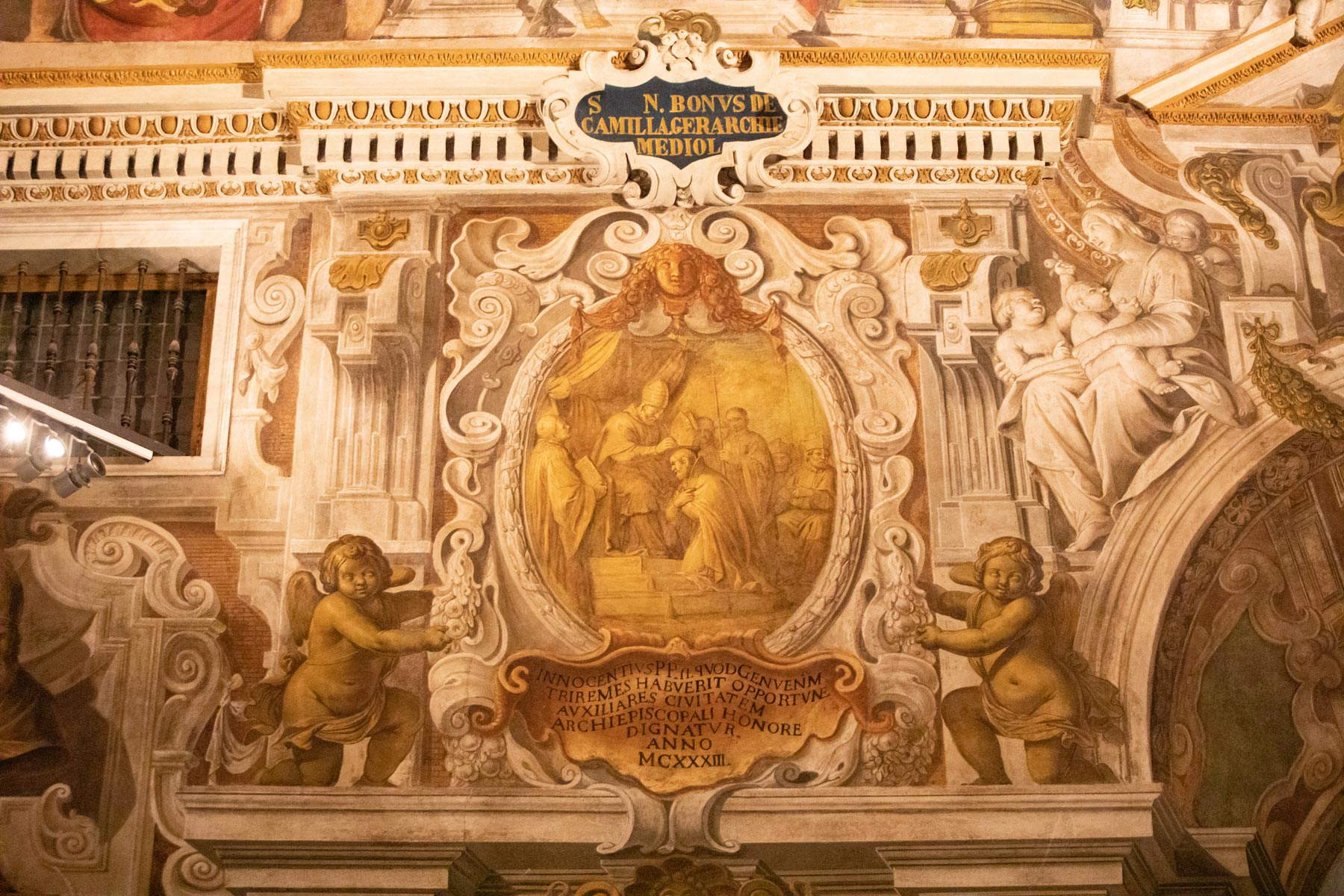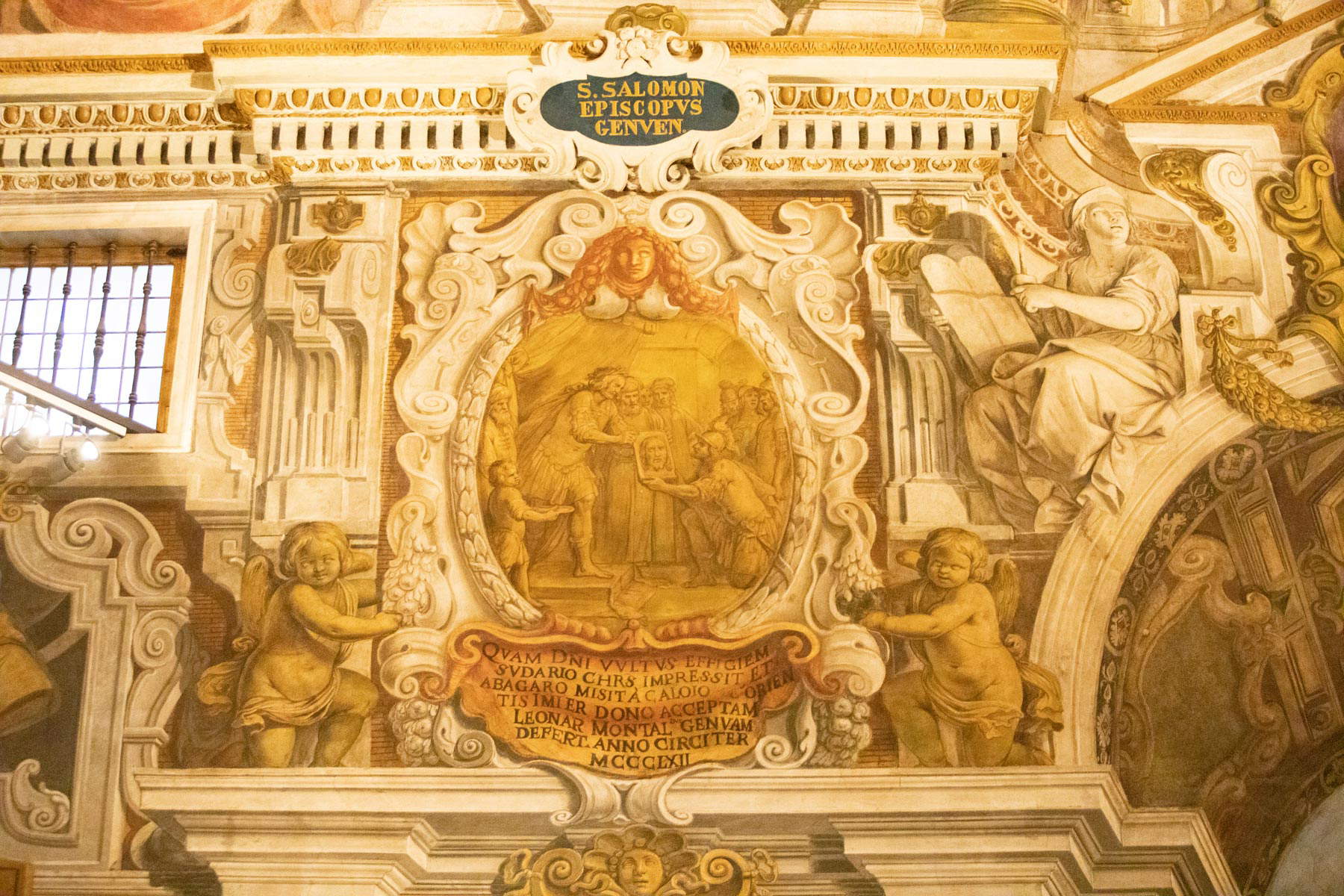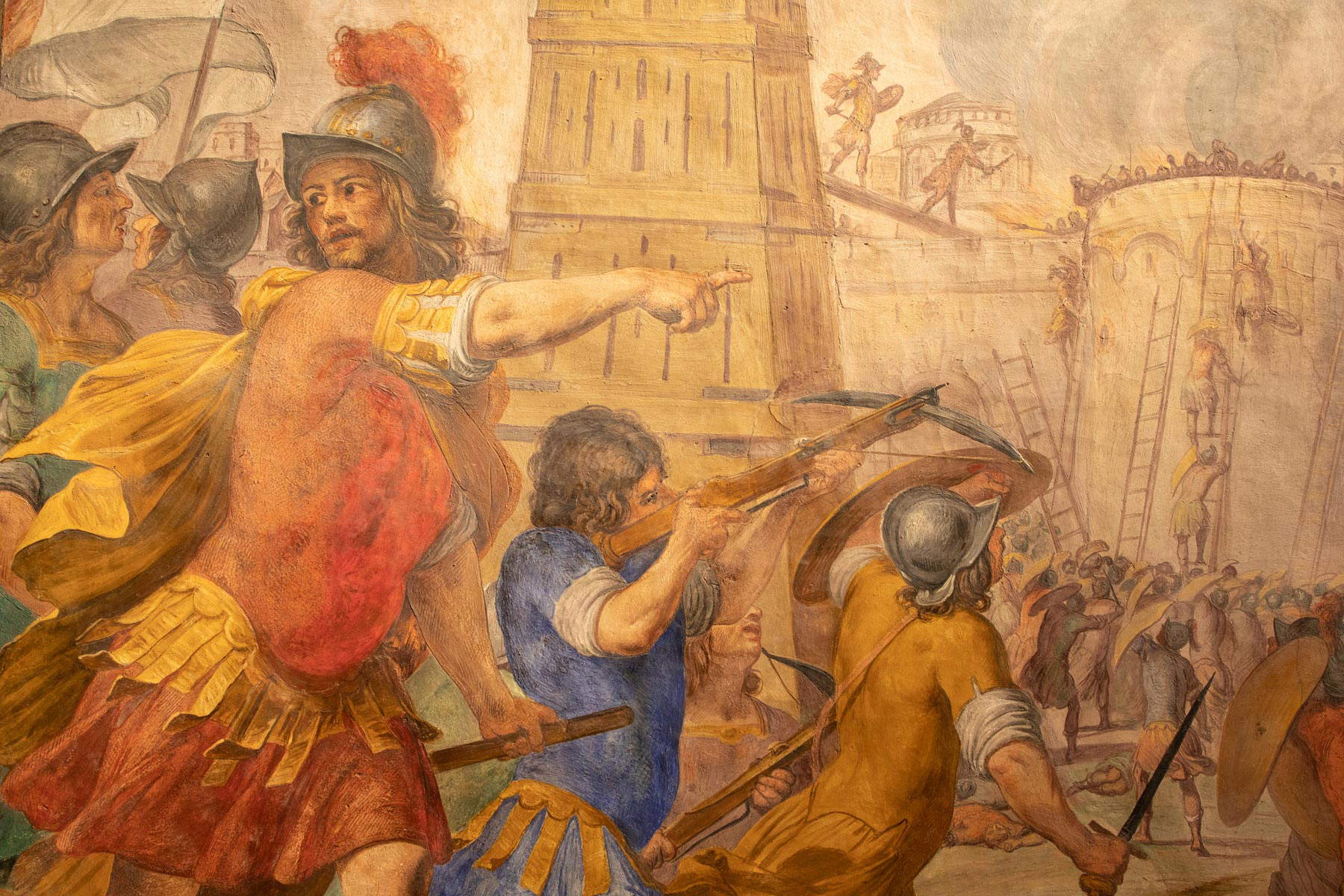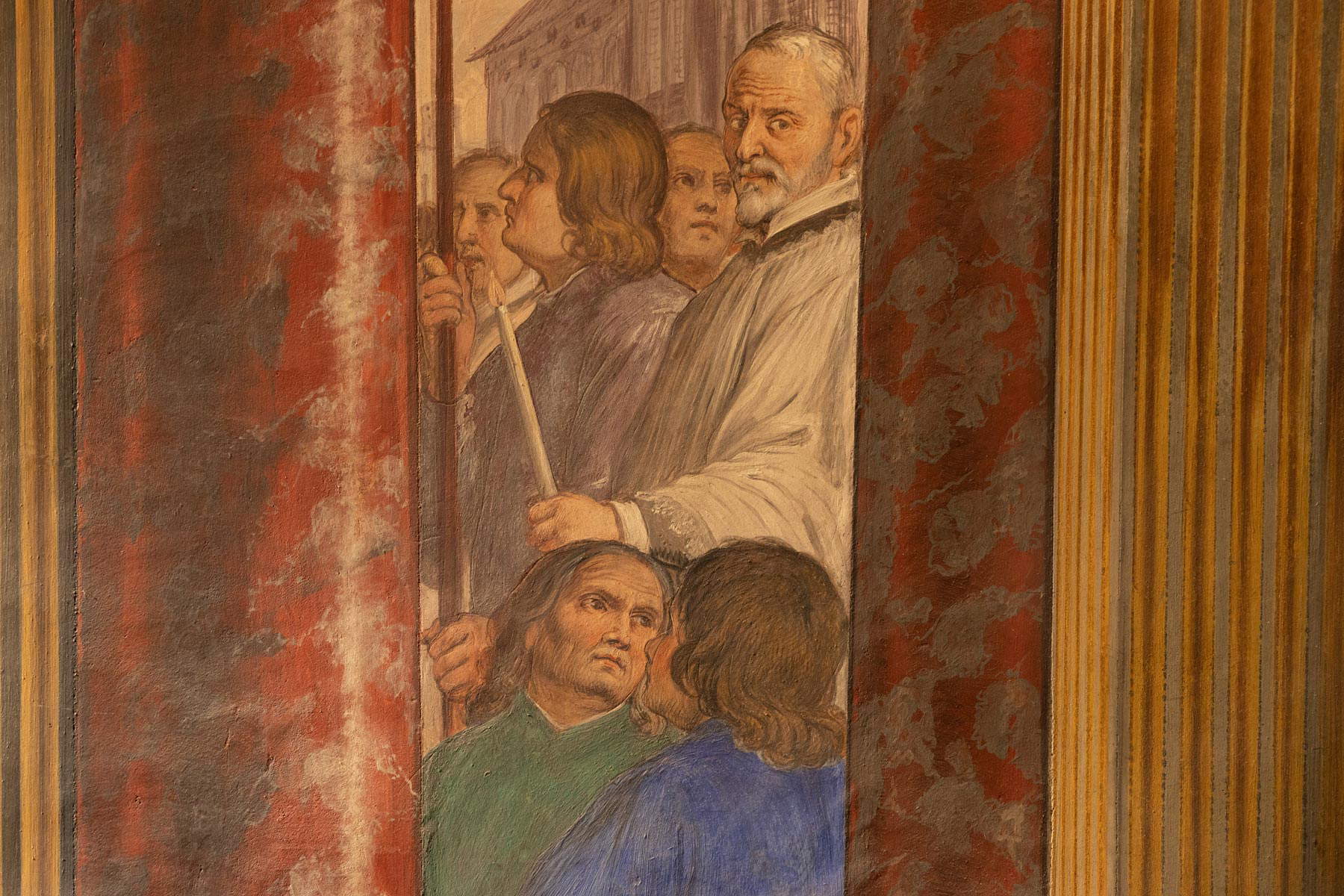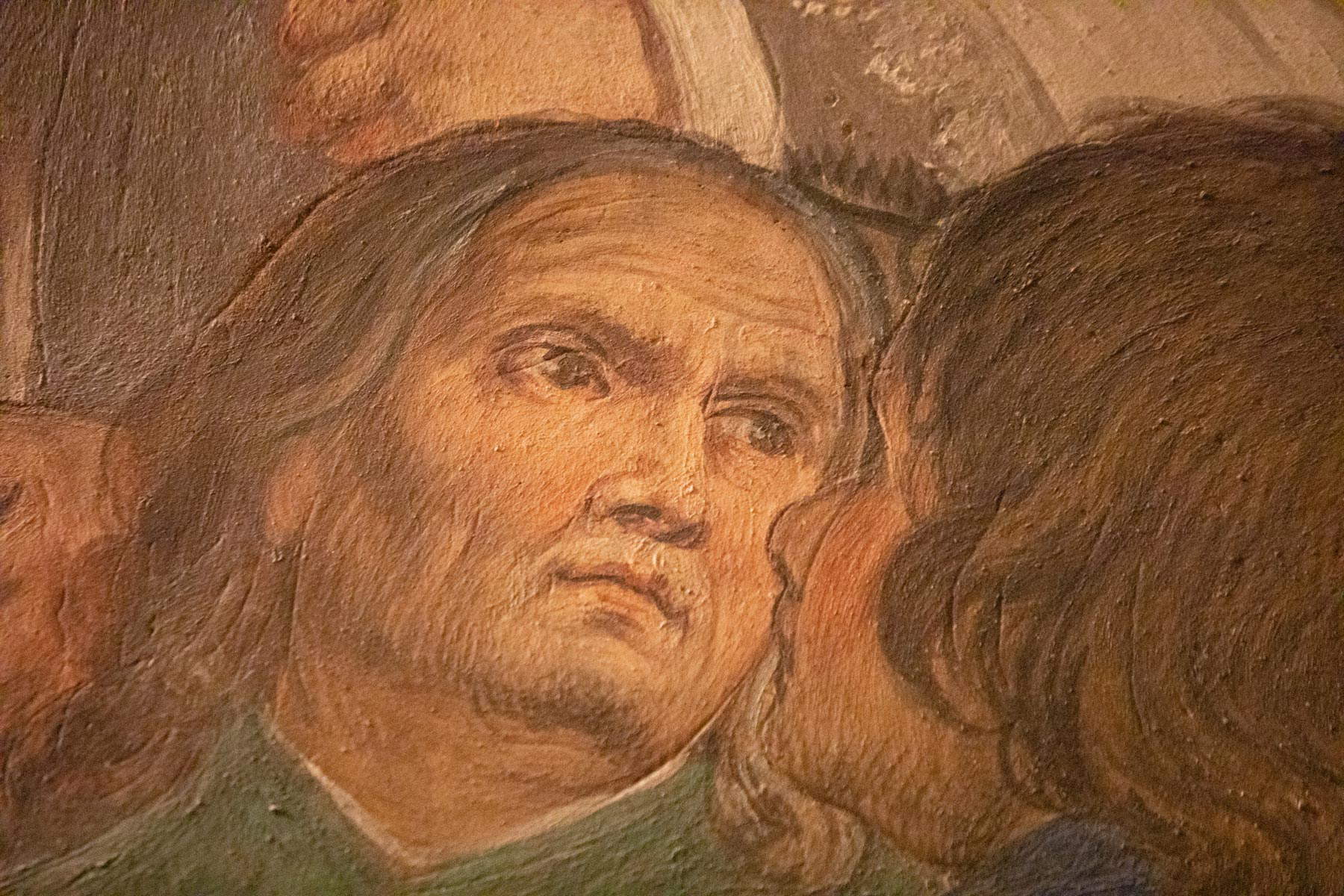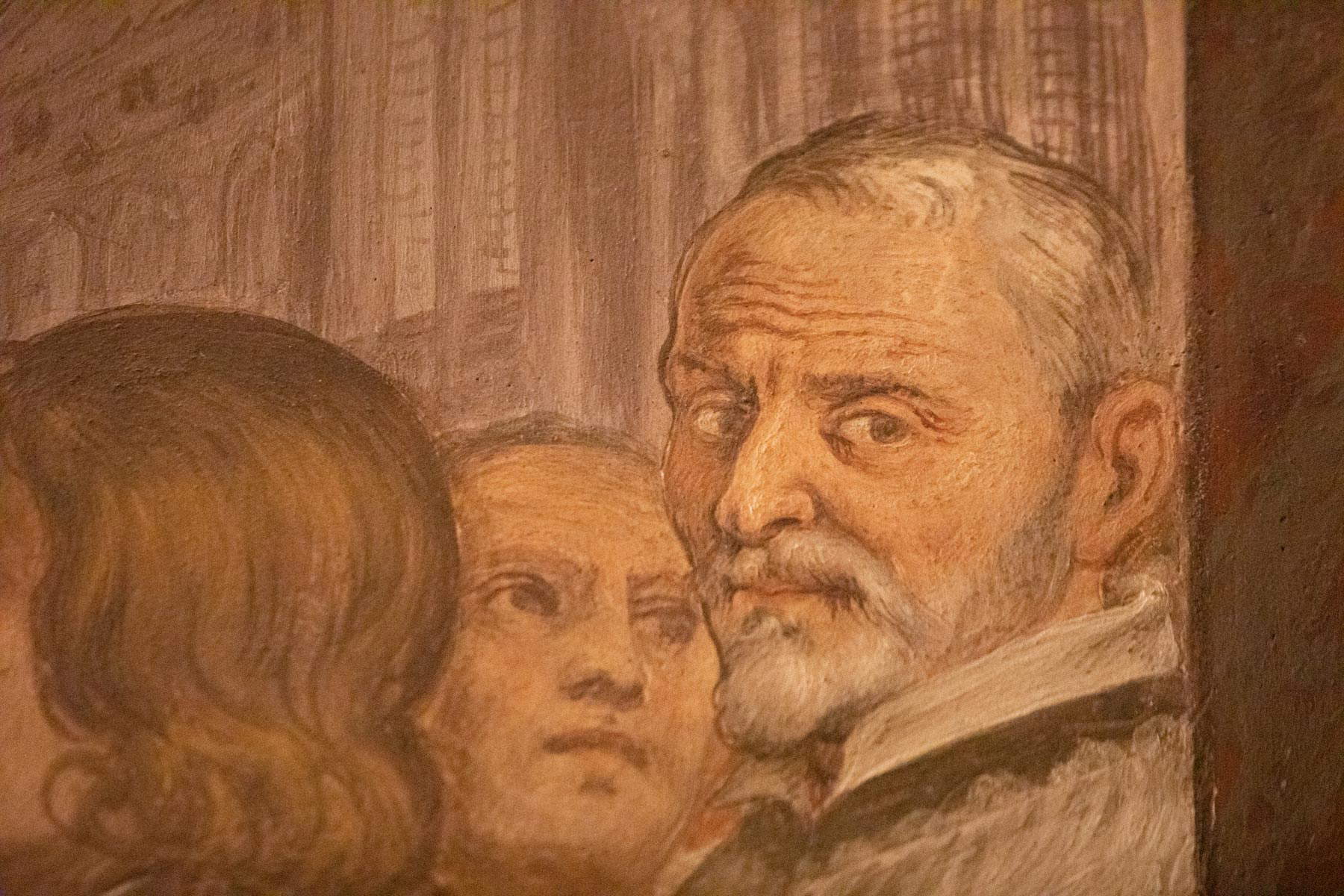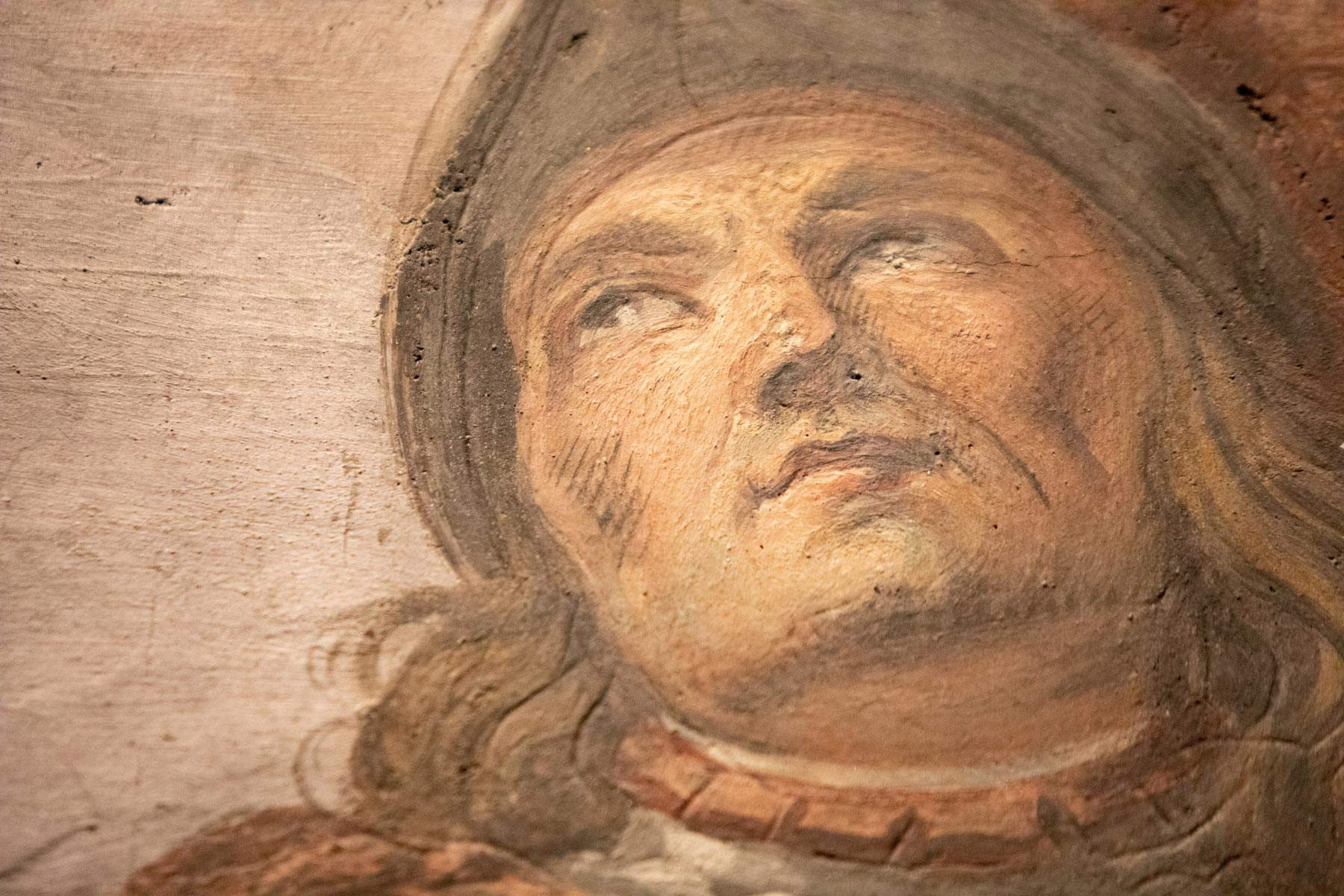by Giacomo Montanari , published on 24/04/2021
Categories: Works and artists
/ Disclaimer
The most precious environment of the Ducal Palace in Genoa, the Doge's Chapel houses frescoes painted by 1655 by Giovanni Battista Carlone: the ideological center of power was enriched with paintings narrating some of the most significant episodes in the city's history.
Embedded in the monumental spaces of Genoa’s Ducal Palace, renovated in the 1770s in a now neoclassical style, is one of the most significant and best-preserved seventeenth-century chapels of the entire ancient Republic. Or rather, perhaps it should be said that (precisely because of the iconography and political choices made explicit here in images) rather than the chapel of the Doge of the Republic, one finds oneself before the Chapel of the Queen of Genoa. So, in fact, indicate it the archival documents that tell of the very rich decoration “per la fabbrica et ornamento della Cappella Reale” to be placed (in its phase still visible in its entirety today) between the years 1653 and 1657. In fact, in the Doge’s palace (or simply Päxo, in the Genoese language) a space used as a chapel sive ecclesia palacii is documented as early as 1367, with significant redesigns culminating in an architectural renovation (circa 1580) and, finally, in the decorative triumph of the 1750s.
The seventeenth-century decoration, however, assimilates within it not only an artistic value, but also (above all) a strong political and cultural programmatic. It dates to 1637, in fact, the original solution adopted by the Republic of Genoa to transform its political order into a monarchy, except then to intestacy the crown to the Virgin Mary and, therefore, not to be accountable to any mortal monarch other than the usual biennial Doge whose power was actually far less significant in fact than it appeared in power. Concretely, however, the contrivance was to enable the little Republic (which had held and to some extent still held in its hands much of the finance of Europe and beyond) to pass as equals to the other crowned heads in international ceremonial, without suffering those marginalizations that, beginning with the first quiebras of 1607 and 1627, became increasingly frequent especially by the Spanish royals, stymied by the monumental gains of the Genoese consisting of the enormous interest earned on loans granted to the Crown. Date within a few years of this resounding decision, in fact, an important diplomatic mission to the Spanish court led by Anton Giulio Brignole Sale, with the stated aim of convincing Felipe IV to officially recognize Genoa as a monarchy: the Genoese aristocrat, however, not only did not have the success hoped for by the Senate of the Republic (a success about which he himself, according to the autograph papers, had serious doubts from the beginning), but in his three years at court (1640-1643) he managed to see His Majesty only twice.
And in both of them he was not allowed to enter the subject. However, the great political “machine” had been set in motion, and to communicate such an epochal decision it was absolutely necessary to constitute a de facto new image that could indicate the new role held by Mary vis-à-vis all the Genoese. Our Lady Queen of Genoa, holding the scepter and the Child holding the scroll Et rege eos to indicate her governing mandate towards the city, immediately became a propaganda iconography to be transmitted urbi et orbi: Domenico Fiasella created its prototype, and paintings depicting its effigy towering over the city itself enclosed by the mighty New Walls completed precisely in 1635 were sent to Genoese communities throughout Italy, from Naples, to Palermo, to Messina, to Rome, while all the renovated city gates were given sculptural images of the Queen of the City. Even the high altar of the Cathedral of San Lorenzo received a stunning bronze casting (attributed to Giovan Battista Bianco, but most likely executed by the Florentine Francesco Fanelli) of the Madonna Regina, at whose feet stretches a meticulous depiction of the Superb, in which stands out, as mentioned, the cyclopean city walls (within which, even to this day, the city is contained almost in its entirety).
 |
| The Doge’s Chapel in the Ducal Palace (Genoa) with frescoes by Giovanni Battista Carlone (1655). View toward the back wall |
 |
| The left wall with the scene depicting Guglielmo Embriaco bringing the ashes of the Baptist to Genoa |
 |
| The wall with the scene depicting Christopher Columbus planting the cross on the beach of San Salvador |
 |
| Detail of the right wall, depicting The Taking of Jerusalem |
 |
| The ceiling of the Doge’s Chapel |
 |
| Francesco Maria Schiaffino, Madonna Queen of Genoa (1729; marble; Genoa, Ducal Palace, Doge’s Chapel) |
Could, then, the ideological center of city power remain without a precise connotation regarding this significant new relationship between the City’s grandiose history and the Madonna? Certainly not, so the one who, by the middle of the century, was the owner of the city’s leading art firm, Giovanni Battista Carlone, was called upon to put his hand to this new decorative instance. He and his brother Giovanni had in fact decorated the entire aisles of the basilica of the Annunziata del Vastato, the palace of Giacomo Lomellini (the Doge who repelled, against all odds, the assault of the Duke of Savoy Charles Emanuel I on the Republic between 1625 and 1627) and the church of Sant’Antonio Abate in Milan, where Giovanni had died, prematurely, in 1631. Giovanni Battista had then gone on with astonishing fresco undertakings in dozens of other urban and suburban sites, effectively developing the prodromes of the season of triumphant Ligurian Baroque, leading up to the resounding episodes of the Aeneas Gallery in the Ayrolo Negrone palace in Piazza Fontane Marose (ca. 1650) and the church of San Siro (ca. 1651-1656). Between these last two, cyclopean, fresco endeavors lies the decoration of the Doge’s Chapel, nearing completion as early as 1655, since the scholar and politician Luca Assarino thus discusses it in the dedication addressed to Giovanni Battista Carlone of the fourth book of his Giuochi di Fortuna, published in Venice that very year: “But more than ogne thing does nowadays bear witness to the prerogatives of your hand the royal chapel of this Most Serene Senate, which you are now painting, the figures of which (without hyperbole) I know not what of life and motion, make the pupils who come to gaze upon them stand motionless in amazement.”
And indeed Carlone’s pictorial feat is still resoundingly engaging today: entering through one of the two reduced doors located on the back wall, one is greeted by a space enveloped in totalizing decoration. In front stands the great altar designed and made by Giulio De Ferrari according to the contract notarized in 1653, which houses the later Madonna Regina of Genoa, sculpted by Francesco Maria Schiaffino in 1729, while the decorative elements, cartouches, sculptures and herms made of marble and stucco in the altar structure are punctually evoked in the painting as well, denouncing an obvious design relationship between the two coeval enterprises and, in great probabilityCarlone’s leadership in this operation, given also the considerable experience he must have inherited in the sculptural and architectural field from his father Taddeo, one of the main interpreters of the late manner in the Ligurian environment and the true “progenitor” of the family line that, from Rovio in the Intelvi valley, had definitively settled in Genoa. Of great impact are the monumental and opulent French red marble columns, skillfully reiterated in Carlone’s trompe l’oeil fiction on the chapel’s sides as well, framing the scenes depicted beyond illusory loggias that dilate the space of the representation. Still facing the altar, on the right, having crossed the illusory loggia that extends the rich floor decoration of inlaid polychrome marbles, the viewer is catapulted, in the first line, into thesiege of Jerusalem victoriously conducted for Godfrey of Bouillon by the Genoese William Embriacus in 1099, who solved the plight of the Western army during the First Crusade by having the ships of the fleet dismasted in order to build the self-propelled towers that made it possible to take the walls of the Holy City. Embriaco’s gamble earned the Genoese privileges and recognition, both in the Holy Land and at home, and William became a kind of allegory of the city’s own valor, equally capable of great warrior daring as well as calculated consideration of risks. On the opposite wall, beyond an illusory space in every way similar, the loggia opens instead onto a pier, to which two sinewy slaves are pulling up a rich lifeboat carrying an ever-recognizable Guglielmo Embriaco before the archbishop of Genoa. The leader holds out to the high prelate a box containing nothing but the ashes of St. John the Baptist, which were preyed upon in Caesarea by the Genoese contingent in 1101, returning from the expedition to Jerusalem. Instead, on the third wall, the one from which the doors lead into the chapel, is a large “reported painting,” surrounded by an illusory thick gilded frame: in the center, a modern-dressed Christopher Columbus, his eyes turned significantly to the sky, plants a large cross on the newly reached soil of the island of San Salvador in the West Indies.
 |
| View of the Doge’s Chapel |
 |
| Guglielmo Embriaco delivers the ashes of the Baptist to the bishop of Genoa |
 |
| Detail of the Madonna Queen of Genoa in the ceiling of the Chapel |
 |
| Pope Innocent II grants archiepiscopal dignity to the city of Genoa (1133) |
 |
| Consecration of the Cathedral of San Lorenzo (1118) |
 |
| Donation of the Holy Face of Edessa by John V Paleologus to Doge Leonardo Montalto (1362) |
 |
| Donation to the city of Genoa of a fragment of the True Cross by the De Fornari family (1202) |
 |
| Detail of the Taking of Jerusalem |
 |
| Detail of the scene of the arrival of the ashes of the Baptist in Genoa with the probable portraits of John the Baptist and John Carlone |
The foundational elements of the relationship of the Genoese’s boldness with the sphere of the divine are basically all evoked, but added to the sides of the altar itself, under the royal loggia created by the Corinthian columns, are the massacre of the Justinians of Chios at the hands of the Ottoman Turks (1566) on the right and the creation of the Tridentine Order of Clerics Regular Minor by the Genoese father Giovanni Agostino Adorno (1588) on the left. On either side of the scenes described are large faux bronze sculptures of the first evangelizers of Liguria, such as Nazarius and Celsus or St. Barnabas himself, above which, in four cartouches, are effigies of as many founding episodes for the Genoese church, such as the Consecration of the Cathedral of St. Lawrence (1118), the moment when PopeInnocentII granted the dignityarchbishop to the city of Genoa (1133), the Donation to the city of Genoa of a fragment of the True Cross by the De Fornari family (1202), and the Donation of the Holy Face of Edessa by John V Paleologus to Doge Leonardo Montalto in 1362. The illusory architecture reconnects, then, the faux loggias to a complex theory of caryatids housing, seated on trunks, bishops and illustrious personalities of the Ligurian clergy, overseen, with the sole exclusion of the side occupied by the altar, by three illustrious Genoese nuns: saint Caterina Fieschi Adorno, the venerable Battista Vernazza and the blessed Maria Vittoria De Fornari Strata.
It is then some marvelous groups of angelic singers and musicians, facing and seated in airy loggias decorated by illusory vaults frescoed with Old Testament stories related to Moses and Abraham, that lead to the great central space of the vault, where Mary sits on a throne of clouds, surrounded by the four patron saints of the city of Genoa: saint George, saint Lawrence, saint Bernard of Clairvaux, and saint John the Baptist. Carlone renounces any kind of perspective illusionism in the vault and presents the scene as a large reported painting, with the figures faithfully devoted to the space devoted to them by the artist within the ficta architecture. Undoubtedly, the need for a strong expository clarity in the management of the narrative space of the chapel, which has the arduous communicative task of tying together episodes related to civic glory and elements related to the devotional sphere, pushed theartist (under the guidance of a patron with clear ideas in his head) to accompany each scene and each figure by an appropriate caption to allow their easy identification, just as most of the iconographic choices for the depiction of the saints present are drawn with evident clarity from texts of some renown published at the time in the Genoese area. This need for clarity also stands out in the iconographic orthodoxy of the representations, which come to stiffen into a rather congealed parataxis particularly in the vault itself, while the narrative and chromatic freshness typical of Carlone triumphs in the side episodes and, in particular, in the angelic choirs, which are then nothing more than an exquisite allegory of a royal choir, which was to take its place, at the same height as those painted, in the tribune of the back wall. A function recently recovered for use, thanks to the Director of the Ducal Palace Serena Bertolucci, who wanted to give the Chapel the proper interest and due attention, including the valuable restoration involving the altar and the sculpture of the Madonna Regina by Francesco Maria Schiaffino. Evident, however, are the executive traces left by the firm of Carlone, clearly readable in the very frequent carry-overs from cardboard with engravings on the plaster outlining the contours of the figures: a peculiarity that would also be practiced without interruption by Giovanni Battista’s son, Giovanni Andrea, who would be active in such sensationally important worksites as the Chiesa del Gesù in Rome and the Sala Verde in Palazzo Altieri, alongside such personalities as Carlo Maratta and Giovanni Battista Gaulli.
 |
| Probable portrait of Giovanni Carlone |
 |
| Probable portrait of Giovanni Battista Carlone |
 |
| Detail of the engravings |
 |
| Detail of the engravings |
To tell the truth, the engravings appear far more insistent and frequent, so much so as to suggest an execution entrusted to the workers (though no doubt strictly controlled by Carlone himself) in the panels of the Taking of Jerusalem and in that of Columbus plants the cross on the beach of San Salvador, while they are more sparse in the left wall, depicting Guglielmo Embriaco carrying the ashes of the Baptist to Genoa. What’s more, in this last scene (where the figures seem to be drawn without the aid of the cartoon trace) the brushstrokes, although it is a fresco execution, become vibrant and charged with pictorial matter, so much so that they are still detected and material, almost as if it were an oil painting. And it is here that I seem to be able to glimpse (still not understood by anyone) two wonderful and eloquent portraits of the Carlone brothers, which correspond well with the engravings left to us in their memory in the volumes made by Raffaele Soprani and later updated by Carlo Giuseppe Ratti: Giovanni, dead now almost twenty-five years earlier, looks melancholy at the viewer with his lean face adorned with a mustache and goatee, dressed as a cleric and holding a candle in his hand, as if to signal his already passed away; Giovanni Battista, on the other hand, at the ’apex of his successful career that would not end until 1684, with a florid face and flowing hair, is dressed almost in a business suit and averts his gaze, as is proper for the living, still unable to “look from the picture” to the present. Although one must always proceed with great caution in identifying any artist’s self-portraits, given the enormous political-religious significance of the work and the prestige it must have conferred on the painter, it seems more than logical that John Baptist wanted to leave a signature, on behalf of himself and his late brother, in the place and work that he considered to be the pinnacle of his own artistic and professional career. The two of them, moreover, “inhabit” a portion of the fresco that is separated from the main scene by one of the trompe l’oeil columns, maintaining, therefore, their location somewhere between the space of the depiction and the real space.
As if to prove, if there was still a need, that the barrier of an already imagined virtuality of space could easily be broken by pictorial art. To tell the truth, a further trace in this sense Carlone left in the Doge’s Chapel: on closer inspection, at least four monochrome putti, painted to pretend as many sculptures homologous to those made in marble on the altar acroters, have real legs molded in stucco, which definitely protrude from the wall going to give substance to the pictorial illusion. To date, if one is to exclude Lazzaro Tavarone’s episodic attempt with the Indio arch in the Columbian fresco in the Belimbau Palace (1610), this is surely the first detectable attempt in Genoa to bring together plasticity and illusory representation: a premiere that comes ten years after the Roman exploit of the Cornaro Chapel, where Gianlorenzo Bernini’s direction coordinates Guidobaldo Abbatini’s innovative research in the vault above the sculptural group of theEcstasy of St. Teresa. A confirmation of the not at all belated reception of Roman stylistic features even in a center that, like Genoa, was returning to play more peripheral roles, but which had not, however, become incapable of picking up the innovative figures suggested by the most up-to-date languages that the world of the arts was proposing in the “squares” of greatest cry.
Warning: the translation into English of the original Italian article was created using automatic tools.
We undertake to review all articles, but we do not guarantee the total absence of inaccuracies in the translation due to the program. You can
find the original by clicking on the ITA button. If you find any mistake,please contact us.
